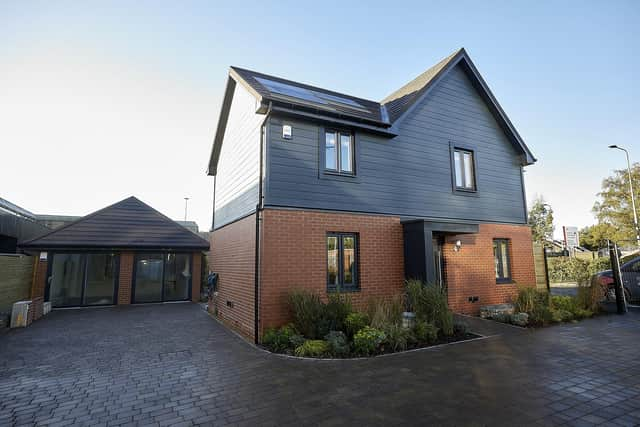How Barratt is blazing a trail to deliver energy efficient homes
The government’s Committee on Climate Change says that heating and powering buildings accounts for about 40 per cent of UK greenhouse gas emissions, with around 14 per cent coming from dwellings.
It would like to see full decarbonisation of buildings by 2050 and to achieve this, construction regulations will become increasingly more stringent.
Advertisement
Hide AdAdvertisement
Hide AdFrom 2025, there looks set to be a ban on gas and oil boilers in new homes with heating provided by low carbon alternatives, including air source heat pumps and, possibly, hydrogen boilers.


The Future Homes and Buildings Standard will also demand that newly constructed homes emit 75 to 80 per cent less carbon emissions than properties delivered under the old regulations.
So now the race is on to ensure that new-builds of the future meet upcoming government goals and blazing a trail is Barratt Homes, Britain’s biggest housebuilder.
The company constructs 18,000 properties a year and its ambition is to be the UK’s leading sustainable volume housing developer.
Advertisement
Hide AdAdvertisement
Hide AdIt is well ahead of the game, thanks, in part, to a collaboration with the University of Salford.
Barratt has built the Zed House in the university grounds, the first zero carbon home developed by a major housebuilder.
The pioneering property, built off-site using modern methods of construction, is part-funded by the government and is a partnership with over 40 organisations from the housebuilding, sustainability and technology sectors.
The state of the art house is being used by academics to monitor the most modern sustainable housing technologies, including an air source heat pump, infrared heating panels, plaster that eliminates pollutants, a fridge that keeps food fresh for longer, heated skirting boards, air-powered showers and photovoltaic solar panels with battery storage.
Advertisement
Hide AdAdvertisement
Hide AdIt will be lived in by a university academic who will report back on their experience..
Meanwhile, in January next year, Barratt is set to launch another test home at Salford University in collaboration with construction materials manufacturer Saint-Gobain to evaluate the impact of extreme hot and cold temperatures.
“The results of our tests will be shared with the housebuilding sector,” says Oliver Novakovic, Technical and Innovation director at Barratt Homes,
“Ultimately, our aim is to find commercial solutions to enable our business and the wider industry to build high quality, zero carbon homes at scale .”
Advertisement
Hide AdAdvertisement
Hide AdWhile 99 per cent of Barratt Homes now achieve an A or B energy performance rating the company has set its own targets for greening its operation.
All its properties will be completely zero carbon from 2030, well ahead of any government deadline, and 100 per cent of its operational electricity will be from renewable sources by 2025.
It would like to take the wider industry with it but says there are obstacles to overcome.
Oliver Novakovic says: “We need to innovate and test the low carbon technologies to find solutions that work and make being green easy and cheap.
Advertisement
Hide AdAdvertisement
Hide Ad“We also need a robust supply chain with products, such as air source heat pumps, available at scale and at a price required to meet significant demand.
“Skilled people will be needed to install and maintain the new technologies and the national grid must be ready to take the strain, with added capacity to cope as the nation increases its reliance on electricity.”
Making more use of off-site construction is definitely on the cards as is persuading buyers to embrace the future.
A recent survey revealed that a third of those asked worried that air source heat pumps were unattractive and take up space in the garden. Looks aren’t everything and Norwegians will attest to that. Over 60 per cent of homes there use air source pumps for heating and hot water.
Advertisement
Hide AdAdvertisement
Hide Ad“This challenge of communications is one we need to work on collectively as a sector,” says Oliver.
Cost is another consideration as new technologies are more expensive and that is likely to impact on prices. This may mean that landowners will need to accept less when selling to developers to take account of higher build costs.